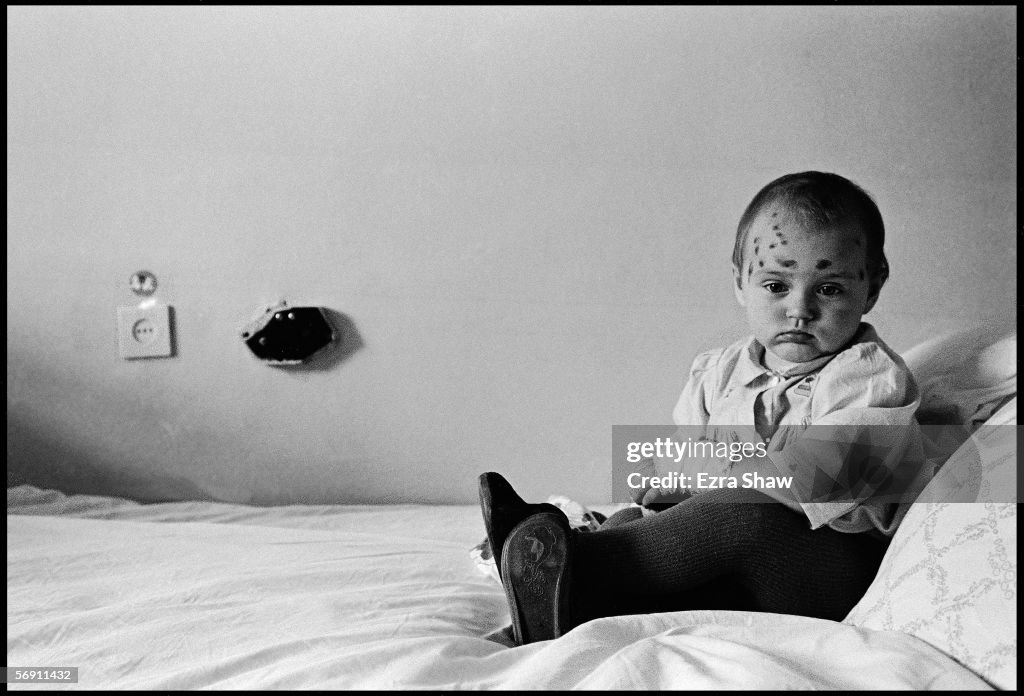Children Of Chernobyl
MINSK, BELARUS - AUGUST 16: 2-year-old Nastya Dolgovevets from Slutsk village in the Minsk region of Belarus sits on her bed on August 16, 1996, at the Children?s Division of the Oncology Research Institute in Minsk, Belarus. She has been diagnosed with a left wrist tumor. The marks on her head were from iodine that the doctors used to cover up little spots that were beginning to appear on her body that they were unsure what they were from. On April 26, 1986, reactor number four at the Chernobyl Nuclear Power Station on the border of the Ukraine and Belarus exploded. The fire, which burned out of control for five days, spewed more than 50 tons of radioactive fallout across Belarus. The wind carried the heaviest radioactive deposits across Belarus, where even today a large portion of the land is considered uninhabitable. The government denied the accident happened for several days, allowing the people in the Gomel region of Belarus to linger in the radiation. The cause of the medical illnesses are often hard to find, and much harder to prove. But, the rise in the number of cancer cases in this region is too great for any other conclusion ? it has to be the radiation. Many of the children are curable, but the hospitals lack the medicine and the supplies needed to help the children. (Photo by Ezra Shaw/Getty Images)

LICENTIE KOPEN
Hoe mag ik dit beeld gebruiken?
€ 475,00
EUR
Let op: afbeeldingen die historische gebeurtenissen weergeven, kunnen thema’s of beschrijvingen bevatten die niet overeenkomen met huidige denkbeelden. Ze moeten worden voorzien van historische context. Kom meer te weten.
GEGEVENS
Beperkingen:
Neem voor gebruik voor alle commerciële of promotiedoeleinden contact op met uw lokale kantoor.
Credits:
Redactioneel nr.:
56911432
Collectie:
Hulton Archive
Gemaakt op:
16 augustus 1996
Datum van uploaden:
Soort licentie:
Release-informatie:
Geen release. Meer informatie
Bron:
Hulton Archive
Naam materiaal:
56897327EZ013_Chernobyl
Max. bestandsgrootte:
4565 x 3101 px (38,65 x 26,26 cm) - 300 dpi - 10 MB